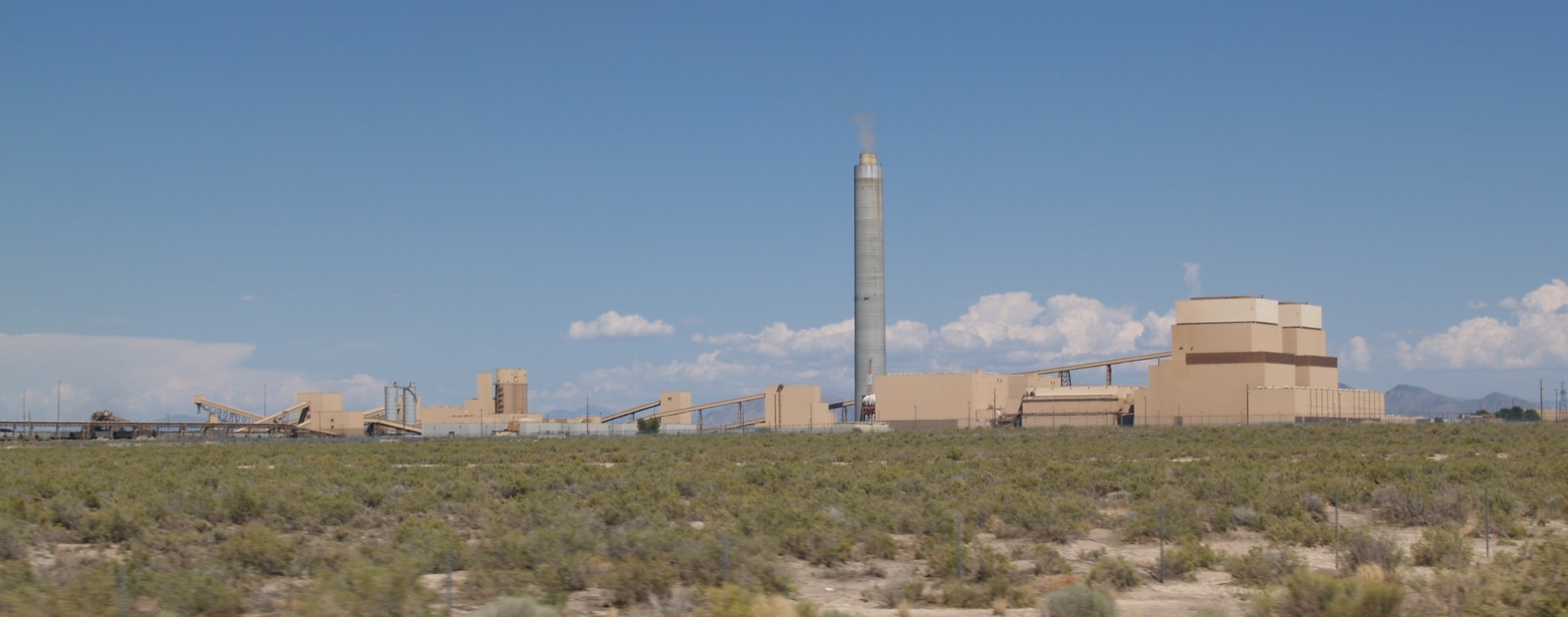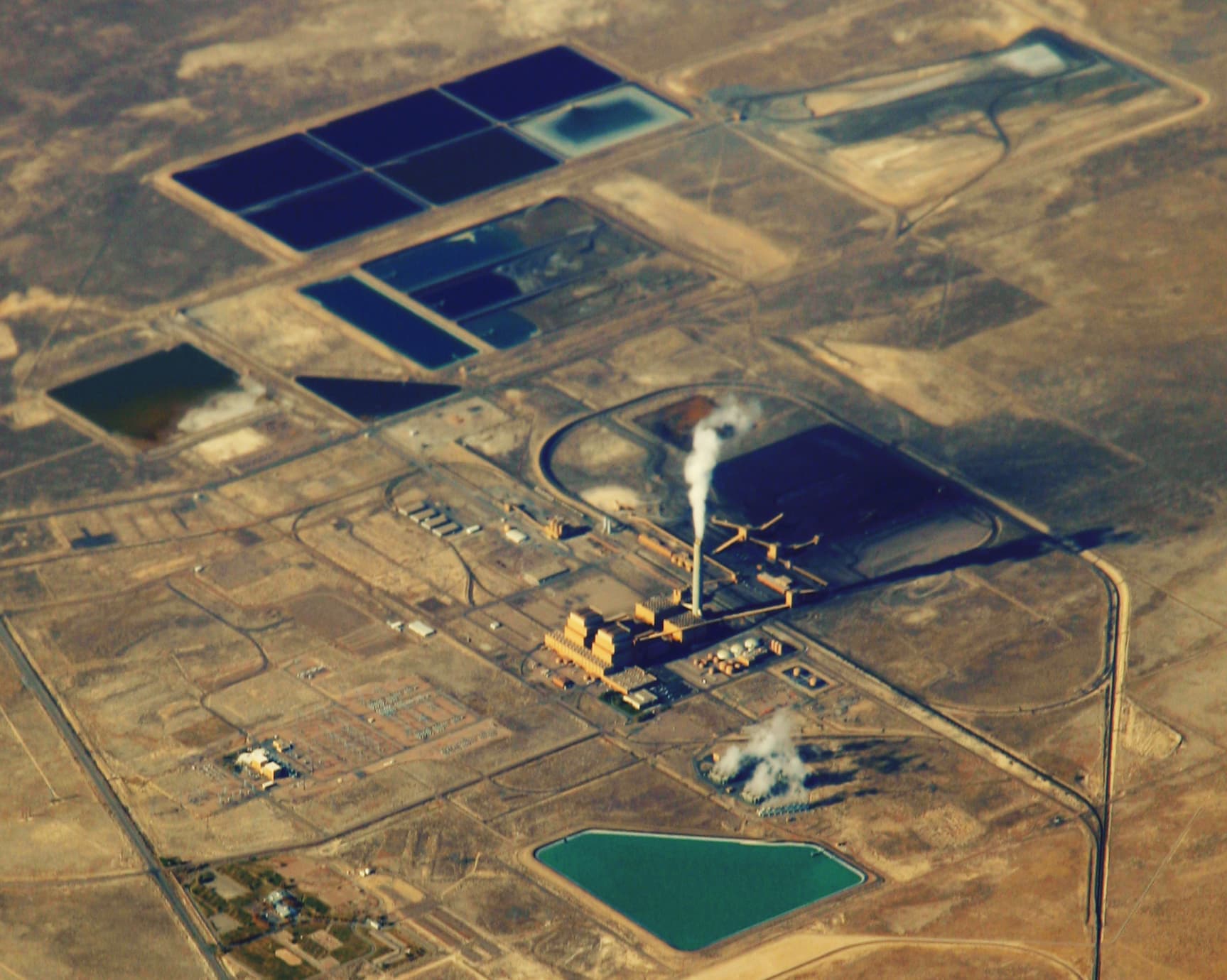December 14, 2020
Hydrogen Hype in the Air
By Seth Mullendore, Lewis Milford, Abbe Ramanan
Here’s an energy quiz. Question: do you think this statement is true?
“Unlike fossil fuels, which emit planet-warming carbon dioxide when they’re burned, hydrogen mostly produces water.”
Answer: false.
That statement appeared in a Bloomberg Green article[1] a week or so ago. It reported on future European plans to use hydrogen (H2) as a fuel “in modified gas turbines” to power airplanes. Similar reports have appeared in other reputable energy articles about how hydrogen is the optimal climate solution because its use will not create any air emissions.[2],[3],[4]
What is true is that renewable power like solar or wind can split water into H2 to produce what the reporters claimed – “emissions free” energy. But that requires a complicated and expensive electrolysis process to make H2. That renewably generated “green hydrogen” would then be run through a fuel cell to make electricity. Fuel cells do not produce carbon dioxide (CO2) or other harmful emissions. There are many smart applications for fuel cell-derived power, in cars and heavy vehicles, and in various industrial applications – what an intelligent hydrogen economy might look like in the years to come.
Clean Energy Group (CEG) has been a fervent supporter of green hydrogen and its use in fuel cells. We worked on hydrogen and fuel cells 15 years ago, when they were one of the few cleaner energy options. Then, we did not have the cheaper and more practical alternatives to fossil fuel plants such as renewables and battery storage that we have today.[5]
Back in 2006, CEG wrote that “[h]ydrogen is most efficiently used in fuel cells where it is converted to electricity “electro-chemically” (i.e., without combustion), with only water and oxygen depleted air as exhaust products.”[6]
This is because combustion is where hydrogen goes from “emissions-free” to polluting, the critical distinction seemingly lost in this new debate about using H2 to address climate change.
Burning H2 and the Future of the Gas Industry. Fast forward 15 years. Now, the gas and the utility industries in the US have decided that combustion is how they want to use hydrogen – even if it is renewably created with solar and wind. They want to take that renewably derived “green hydrogen” and burn it, like we have burned oil and gas and coal for centuries. And contrary to the reporting, that new combustible alchemy is anything but emissions free.
In the last several months, several gas developers have proposed blending H2 and natural gas at Western power plants.[7] Two global finance giants recently proposed a hydrogen blending plant in Ohio, expected to begin operations in the coming months.[8] Some power plant owners in New York also have proposed blending H2 with natural gas, to keep fossil-fuel power plants operating for years beyond when they should have been shut down and be replaced with renewables and battery storage.[9]
Oil and gas companies have also proposed injection of hydrogen into the existing natural gas infrastructure. NextEra Energy in Florida and Dominion in Virginia have released plans to begin inserting a 5% blend in some natural gas shipments beginning in 2021.[10] Southern California Gas Co (SoCalGas) and San Diego Gas & Electric (SDG&E) have also announced plans to begin demonstration projects injecting a 5% blend into the natural gas grid starting next year.[11]
These new “blending” proposals are all the rage in the fossil fuel industry. It has been difficult to pick up an energy trade publication in the last few months without finding a breathless piece about how H2 is the next climate change silver bullet. It might not rival the “too cheap to meter” media campaigns by the nuclear industry in the 1950s, but the recent press push comes perilously close.[12],[13],[14],[15] This apparently coordinated, public relations effort does not seem to be accidental.[16]
The thinking behind these proposals is that, in some undefined future, natural gas plants could be converted into 100% H2 combustion plants, ending reliance on gas for power generation. Blending H2 over time at increasingly higher levels into gas plants seems to be the industry’s plan to keep gas plants running and pipeline infrastructure in place for the next few decades, testing the impact of these experiments over time with the public.
It must be noted that burning H2 for power production has never been done before in this country. It is a novel, untested, and potentially problematic environmental experiment that could play out in American cities.
Why that is requires a little chemistry lesson.
H2 Combustion and NOx – The New Air Pollution Threat. What happens when H2 is combusted?
Burning H2 does not produce carbon dioxide (CO2) emissions. That is good news for the climate.
However, hydrogen combustion produces other air emissions. And that scientific fact is the untold story in this aggressive industry plan, one that could turn green H2 into ghastly H2.
The bad news is that H2 combustion can produce dangerously high levels of nitrogen oxide (NOx). Two European studies have found that burning hydrogen-enriched natural gas in an industrial setting can lead to NOx emissions up to six times that of methane (the most common element in natural gas mixes).[17],[18] There are numerous other studies in the scientific literature about the difficulties of controlling NOx emissions from H2 combustion in various industrial applications.[19],[20]
Even the Trump Administration’s Department of Energy “Hydrogen Program Plan” identifies H2 combustion as a significant problem. It states that additional research is needed on a host of emissions control issues around H2 combustion. The point DOE makes is that at very low levels of H2 blending, the NOx emissions levels might be controllable. But at higher levels, it is not only difficult to control NOx emissions, but the technologies that have been developed to attempt to control those higher NOx levels remain unproven.[21] That research is years off.
This emissions problem is not a secret but a longstanding industry problem. A recent industry report from the European Turbine Network regarding H2 combustion states: “The higher adiabatic flame temperature of H2 will result in higher NOx emissions if no additional measures are undertaken…It will be particularly a challenge to achieve even stricter NOx-limits foreseen in the future.”[22]

Intermountain Power Plant. Photo by Phil Konstantin, Public Domain.
This problem is only slowly emerging in public conversation. An article in The Economist just last week noted that combustion for aircraft propulsion carries new “risks increasing the pollution generated in the form of oxides of nitrogen, which would partially negate the environmental benefits of burning hydrogen.”[23]
Similarly, Union of Concerned Scientists (UCS) last week also highlighted the combustion issue, along with many other concerns, when it noted that “when hydrogen is combusted (as opposed to used in a fuel cell), it can generate significant NOx emissions, commensurate with that of natural gas combustion—or worse.”[24]
Here are the technical reasons behind this new emissions problem. Most gas turbines today are dry low NOx (DLN) combustion systems specifically designed to limit the amount of NOx released by natural gas or methane burning. These turbines can handle a low amount of hydrogen, but due to the fundamental differences between hydrogen and methane, they are not designed to handle high concentrations of H2.
The highest concentration of hydrogen a DLN system can handle is ~15%, although DOE is currently working with GE to produce a DLN system capable of handling 50%.[25]
Most of these plants would require an upgraded DLN system to handle even a slightly higher concentration of hydrogen in the fuel mix, and no DLN system that currently exists can handle any significant levels of H2 mix, let alone 100%.
Even the highly touted new H2 blending plant in Utah concedes as much. That new project will combine 30% H2 with 70% natural gas. The project, which will serve Los Angeles, if approved as advertised, will produce significant CO2 and NOx emissions. According to a report issued by the project’s own developer, Mitsubishi, this mixture of hydrogen and natural gas “will produce NOx and CO2 emissions equivalent to those from modern natural gas plants.”[26]
That is, according to the industry’s own reports, this new H2 combustion project that is praised as the future of the hydrogen economy will still produce the same levels of NOx (and CO2) emissions as a new natural gas power plant.
Despite these emissions issues, at least one gas peaker plant owner in New York City has embraced hydrogen as the justification to build new gas plants in the heart of the city. In its project filings, the owner proposed switching to 100% “GHG-free hydrogen” by 2040, without any detailed and verifiable information about how this feat this would be achieved over the next few decades, or whether there would be any public health impacts from doing so.[27],[28]
The bottom line with these proposals is this: this new approach to blended H2 combustion does not appear to have the technology in hand to control those emissions at any but negligible levels.
Unless we have this wrong – and we are open to hearing from industry and other experts if we are – this seems like a serious unsolved problem. One that is not being addressed while these power plant owners seek government approvals – and in many cases are already receiving approvals – to operate these new blending operations.
We have checked with some public health experts about whether this combustion of H2 and its emissions impacts – if done on ever larger scales – has been studied by independent scientists in the US. We’ve been told there is no serious, intensive investigation underway in the public health community.
The Environmental Justice Impacts Must Be Studied. These proposals come amidst the ongoing national problem nationwide with increased NOx emissions from all sources, a significant public health threat that is not under control. Long-term exposure to NOx increases the risk of respiratory conditions and heightens sensitivity to allergens. NOx is also a precursor to the formation of fine particles and ground-level ozone, which are both associated with severe adverse health effects.
This problem is especially urgent with the proven link between COVID-19 and air pollution exposure. And as we now all painfully know, the COVID-19 crisis now exposes the environmental injustices facing urban and under-resourced communities.
Multiple studies have drawn a clear link between pollution – both fine particulate matter, known as PM2.5, and nitrogen dioxide – and coronavirus mortality rates.[29],[30] Urban communities of color are most burdened by these pollutants, which come from industry, transportation and power plants.[31],[32]
Given the lack of technology options to control NOx in natural gas “blending” schemes, we now have a fundamental policy disconnect. These aggressive new industry proposals have outpaced the scientific community’s understanding of how a massive uptake of these new NOx sources could adversely affect urban air pollution and public health.
Adding new sources of NOx emissions also conflicts with new air pollution policy measures issued by agencies such as the New York State’s Department of Environmental Conservation (NYDEC) to control NOx in places like New York City. NYDEC recently enacted strict NOx emissions limits for the state’s peaker plants – these are some of the same New York City peaker plants now proposing H2 combustion that would create more NOx emissions.[33]
That gap is made worse with how these new proposals are considered for approval. New proposals to blend H2 and natural gas have come in the form of demonstration projects with low levels of blending. To the average person, without any information on the dangers of NOx emissions (no published articles other than the recent Economist and UCS pieces about these H2 combustion schemes have even mentioned the NOx issue), the proposals might seem harmless enough.
But we know how this works. Once established, these H2 demonstration projects will expand and become the new “industry standard.” We likely will see H2 combustion as the way to justify continued operation of natural gas plants and gas infrastructure; after all, a blended addition of 20% H2 to a natural gas plant still means it continues to run on 80% fossil gas.

Intermountain Power Project. Photo by Doc Searls. CC by 2.0.
This could well lock-in H2 combustion at gas plants for the next few decades despite competition from renewables and battery storage. It is a masterful and audacious survival plan.
But it has not gone without protest. Environmental justice advocates have begun to raise objections to an H2 natural gas blending project in Los Angeles, as they see it as a classic camel’s nose under the tent problem.[34]
In the East, a coalition of environmental organizations and community advocates have called on New York state officials to require a comprehensive evaluation of environmental, climate, and public health issues related to the H2 combustion in New York City neighborhoods.[35]
“Hydrogen as a fuel combustion source is far from the transformative, climate-saving alternative that fossil fuel companies are spending so much money to promote,” said Carlos Garcia, the energy planner for the New York Environmental Justice Alliance. “Apart from its enormous cost of new entry, its newly discovered byproduct of NOx emissions would result in further health disparities in environmental justice communities.” [36]
The alarms raised by local community groups should be heeded.
There needs to be a broader public health conversation about whether we want to introduce entirely new forms of NOx-emitting, combustion-based, power plants across the country, especially in communities of color. We need to better understand the public health ramifications of how well these new emission sources will control this troublesome pollutant.
A Time Out for H2 Combustion Before It Is Too Late? This industry rush to judgement around the use of H2 blending raises a host of potentially problematic and apparently unstudied public health and environmental impacts.
In the face of this onslaught, it might be time to consider a pause for these proposals until we know more about their unintended public health and environmental consequences.
It might even be time to call for a moratorium on permitting of any H2 project that proposes to blend and combust hydrogen with natural gas in any existing or new power plant. Such a moratorium could be enacted at the state level until there are adequate, independent public health studies done by US researchers of the NOx emissions impacts generally and particularly on local environmental justice communities.
Minority communities closest to these power plants should not be guinea pigs once again in another power plant project gone bad. Over half of gas plants in California, for example, are in communities of color; the same unfortunately applies in most major cities.
That concern would not be alleviated by studies only done by project developers. They obviously would not have the needed credibility or objectivity to address collective concerns with this potentially significant new public health risk.
The industry should welcome these studies. If they believe these H2 combustion technologies are essential to address climate over the long-term – and they have the pollution control technology in hand to reduce NOx emissions – then they should be the first to argue for their thorough outside review. These studies should be done by independent air pollution and public health experts before this new use of H2 becomes adopted in demonstration projects that would then create an industry template for future expansion. This would ensure that their consideration and broad adoption by policymakers is not undermined by biased and uninformed support or opposition.
The last thing serious climate proponents of hydrogen need is to trip over avoidable and potentially irreversible environmental problems with high profile, proof of concept demonstrations. That could tarnish and possibly hijack the more responsible, long-term hydrogen climate project, which is valuable and should be pursued.
We’ve Been Here Before. At first blush, many of these proposals appear odd, if not bizarre: take renewably derived “green hydrogen” and then burn it, turning it into a source of conventional air pollutants at levels worse than burning methane. It is harsh to say this, but they have this Alice in Wonderland “through the looking glass” quality, like an upside-down notion to separate recyclables and then burn the recycled materials in a polluting waste-to-energy incinerator to make electricity.
This “what are they thinking?” reaction also comes with a historical parallel.
A few decades ago (and this is an oversimplification), European governments pushed for diesel engines in cars. It was Europe’s key climate transportation strategy because diesel cars produce lower CO2 emissions. However, diesel engines also produce copious levels of NOx. The NOx impacts of the CO2 driven diesel strategy apparently were not factored into the initial EU climate policy trade-off.
In the last few years, European and US government agencies discovered that European car manufacturers trying to comply with the CO2 policy secretly manipulated NOx emissions data, because they lacked the technology to control NOx emissions. The result? A sad scandal now infamously called “Diesel-gate” – the unfortunate but predicable result of ignoring at the outset how NOx emissions can unpredictably rise in a CO2 climate fight.[37]
Let’s not rerun that failed experiment in the US. Future low-CO2 technology promises about hydrogen – however hopeful and well intentioned – shouldn’t justify more NOx pollution in our air now.
Governments that are asked to approve these blending proposals should be secure in knowing there is technology available to control these NOx emissions at all levels first. Otherwise, it is a public health risk that is not worth taking.
As a last point, we should add that CEG did not plan to get involved with this issue. But our long history with fuel cells and hydrogen work, and the numerous accuracy problems with press and industry reports, left us little choice.
We have a serious public education problem when an excellent journal like Yale Environment 360, in a story that was published just a few days ago, simply quoted without qualification an industry spokesman saying that burning H2 in planes will be “zero emissions flying.”[38] And again, in the last few days, this blatant error was repeated in an obscure online publication calling hydrogen combustion a climate “miracle fuel”: “Hydrogen is an abundant resource that gives off no emissions when it is burnt as fuel.”[39]
We felt compelled to try to set the record straight for the public and for the many environmental justice groups who partner with us on pollution reduction and power plant issues. Again, as noted, we welcome criticism and comments from industry and others if we got anything wrong in this overview piece. We need to get this right.
That is because this country’s history of energy production is littered with hyperbolic marketing claims about revolutionary, free, or harmless ways to make electricity. With these hydrogen combustion schemes, let’s not have the more promising climate-fighting uses of hydrogen fall victim to that same disappointing fate.
***
[1] Ryan, Charlotte, and Will Mathis. “Airbus Bets on Hydrogen to Deliver Zero-Emission Jets.” Bloomberg, December 4, 2020. https://www.bloomberg.com/news/articles/2020-12-04/airbus-air-fp-bets-on-hydrogen-to-deliver-zero-emission-planes.
[2] IEA. Hydrogen. 2020. https://www.iea.org/reports/hydrogen.
[3] Penrod, Emma. “Hydrogen Is Having a Moment, and Power Generation Is Leading the Way.” Utility Dive, November 2, 2020. https://www.utilitydive.com/news/hydrogen-is-having-a-moment-and-power-generation-is-leading-the-way/587958/.
[4] Gronewold, Nathanial. “TECHNOLOGY: Future’s Bright for Clean Hydrogen, Top Energy Exec Says.” Climate Wire, October 28, 2020. https://www.eenews.net/stories/1063717193.
[5] Lipman, Timothy E., Jennifer L. Edwards, and Cameron Brooks. “Renewable Hydrogen: Technology Review and Policy Recommendations for State-Level Sustainable Energy Futures.” Clean Energy Group: University of California–Davis, May 2006. https://www.cleanegroup.org/wp-content/uploads/Renewable-Hydrogen-Technology-Review-and-Policy-Recommendations.pdf.
[6] Ibid, Lipman.
[7] St. John, Jeff. “How to Build a Green Hydrogen Economy for the US West.” Green Tech Media, November 17, 2020, sec. Grid Edge. https://www.greentechmedia.com/articles/read/how-to-build-a-green-hydrogen-economy-for-the-u.s-west.
[8] Tomich, Jefferey. “Gas Plant Developer Bets Big on CO-2 Free Hydrogen.” E&E News, December 10, 2020. https://www.eenews.net/energywire/stories/1063720337
[9] French, Marie J. “Downstate Gas Plants Make a Hydrogen Pitch in Bid to Stay Afloat.” Politico, September 30, 2020. https://politi.co/3l0JoWU.
[10] Blunt, Katharine. “Utilities Look to Green Hydrogen to Cut Carbon Emissions.” Wall Street Journal, September 5, 2020, sec. Business. https://www.wsj.com/articles/utilities-look-to-green-hydrogen-to-cut-carbon-emissions-11599298201.
[11] Reuters Staff. “Sempra Develops Plan to Inject Hydrogen into California Natgas Grid.” Reuters, November 23, 2020. https://www.reuters.com/article/us-sempra-hydrogen-natgas-idUSKBN2832FF.
[12] Timperley, Jocelyn. “The Fuel That Could Transform Shipping.” BBC News, November 29, 2020. https://www.bbc.com/future/article/20201127-how-hydrogen-fuel-could-decarbonise-shipping.
[13] Carbeck, Jeff. “Green Hydrogen Could Fill Big Gaps in Renewable Energy.” Scientific American, November 10, 2020. https://www.scientificamerican.com/article/green-hydrogen-could-fill-big-gaps-in-renewable-energy/.
[14] Robbins, Jim. “Green Hydrogen: Could It Be Key to a Carbon-Free Economy?” Yale E360, November 5, 2020. https://e360.yale.edu/features/green-hydrogen-could-it-be-key-to-a-carbon-free-economy.
[15] Bleveans, Lincoln. “You Say Old Coal Plant, I Say New Green Hydrogen Facility.” Green Biz, November 24, 2020. https://www.greenbiz.com/article/you-say-old-coal-plant-i-say-new-green-hydrogen-facility.
[16] Mikulka, Justin. “Major Fossil Fuel PR Group Is behind Europe Pro-Hydrogen Push.” Nation of Change, December 12, 2020, sec. Environment. https://www.nationofchange.org/2020/12/12/major-fossil-fuel-pr-group-is-behind-europe-pro-hydrogen-push/.
[17] Cellek, Mehmet Salih, and Ali Pınarbaşı. “Investigations on Performance and Emission Characteristics of an Industrial Low Swirl Burner While Burning Natural Gas, Methane, Hydrogen-Enriched Natural Gas and Hydrogen as Fuels.” International Journal of Hydrogen Energy 43, no. 2 (January 11, 2018): 1194–1207. https://doi.org/10.1016/j.ijhydene.2017.05.107.
[18] Sadler, Dan, et. al. H21 Leeds CityGate Project Report.” City of Leeds, 2017. https://www.h21.green/wp-content/uploads/2019/01/H21-Leeds-City-Gate-Report.pdf.
[19] Hawksworth, S.J., et al. “Safe Operation of Combined Cycle Gas Turbine and Gas Engine Systems using Hydrogen Rich Fuels”, EVI-GTI and PIWG Joint Conference on Gas Turbine Instrumentation. 2016. https://digital-library.theiet.org/content/conferences/cp693.
[20] “H2 Emission Potential Literature Review.” Business Energy and Industrial Strategy, April 2019. https://assets.publishing.service.gov.uk/government/uploads/system/uploads/attachment_data/file/798243/H2_Emission_Potential_Report_BEIS_E4tech.pdf.
[21] McQueen et. al. “Department of Energy Hydrogen Program Plan.” U.S. Department of Energy, November 2020. https://www.hydrogen.energy.gov/pdfs/hydrogen-program-plan-2020.pdf.
[22] ETN Global. “Hydrogen Gas Turbines: The Path Towards a Zero-Carbon Future.” European Turbine Network, January 2020. https://etn.global/wp-content/uploads/2020/02/ETN-Hydrogen-Gas-Turbines-report.pdf.
[23] The Economist. “Is the time now ripe for planes to run on hydrogen?” December 8, 2020. https://www.economist.com/science-and-technology/2020/12/08/is-the-time-now-ripe-for-planes-to-run-on-hydrogen.
[24] McNamara, Julie. “What’s the Role of Hydrogen in the Clean Energy Transition?” Union of Concerned Scientists, December 9, 2020. https://blog.ucsusa.org/julie-mcnamara/whats-the-role-of-hydrogen-in-the-clean-energy-transition.
[25] Goldmeer, Jeffrey, PhD. “Fuel Flexible Gas Turbines as Enablers for a Low or Reduced Carbon Energy Ecosystem.” GE Power, February 2019. https://www.ge.com/content/dam/gepower/global/en_US/documents/fuel-flexibility/GEA33861%20Power%20to%20Gas%20-%20Hydrogen%20for%20Power%20Generation.pdf.
[26] Mitsubishi Heavy Industries Group. “Renewable Energy Storage: Combining Existing Dry Low NOx Combustion Technology with Proven Hydrogen Storage and Production Approaches.” 2020. https://www.changeinpower.com/wp-content/uploads/2020/03/MHPS-ACES-Proven-Technology.pdf Note: This link connects to the March 2020 version of this report. A subsequent version published in July 2020 removed all mentions of CO2 emissions from the report without additional explanation. Both versions of the report can be found online as of December 22, 2020.
[27] NYS Department of Environmental Conservation, SEQR Lead Agency. “State Environmental Quality Review Act Final Scoping Document: Astoria Replacement Project.” Astoria Gas Turbine Power LLC, September 2020. https://www.nrg.com/assets/documents/legal/astoria/09-18-20AstoriaFinalScope.pdf.
[28] UPROSE, THE POINT CDC, New York City Environmental Justice Alliance, New York Lawyers for the Public Interest, Clean Energy Group, Chhaya CDC, Sierra Club, and Earthjustice. “RE: State Environmental Quality Review Act Final Scoping Document Astoria Replacement Project Astoria Gas Turbine Power LLC.” November 6, 2020. https://www.cleanegroup.org/publication/peak-coalition-letter-astoria-replacement-project/.
[29] Wu, Xiao, Rachel Nethery, Benjamin Sabath, Danielle Braun, and Francesca Dominici. “Exposure to Air Pollution and COIVD-19 Mortality in the United States.” Harvard T.H. Chan School of Public Health, April 5, 2020. https://projects.iq.harvard.edu/files/covid-pm/files/pm_and_covid_mortality.pdf.
[30] Ogen, Yaron. “Assessing Nitrogen Dioxide (NO2) Levels as a Contributing Factor to Coronavirus (COVID-19) Fatality.” Science of The Total Environment 726 (July 15, 2020): 138605. https://doi.org/10.1016/j.scitotenv.2020.138605.
[31] Gordon, Serena. “Why Are Blacks, Other Minorities Hardest Hit By COVID-19?” US News & World Report, May 6, 2020. https://www.usnews.com/news/health-news/articles/2020-05-06/why-are-blacks-other-minorities-hardest-hit-by-covid-19.
[32] Mullendore, Seth. “Why We Must Shut Down Polluting Urban Power Plants.” US News & World Report, May 27, 2020. https://www.usnews.com/news/cities/articles/2020-05-27/its-time-to-shut-down-polluting-urban-power-plants.
[33] Hodgson Russ LLP. “New York Adopts Nitrogen Oxide Emissions Rule Aimed at Mitigating Peaker Plant Emissions and Boosting Energy Storage.” JD Supra, January 23, 2020. https://www.jdsupra.com/legalnews/new-york-adopts-nitrogen-oxide-35163/.
[34] Iaconangelo, David. “TECHNOLOGY: Utilities Launch Groundbreaking ‘green’ Hydrogen-Gas Project.” E&E News, November 25, 2020. https://www.eenews.net/stories/1063719323.
[35] Ibid, French.
[36] Private conversation with authors, December 11, 2020.
[37] Amelang, Soren, and Benjamin Wehrmann. “‘Dieselgate’ – a Timeline of the Car Emissions Fraud Scandal in Germany.” Clean Energy Wire, May 25, 2020. https://www.cleanenergywire.org/factsheets/dieselgate-timeline-car-emissions-fraud-scandal-germany.
[38] Ibid, Robbins.
[39] Hours, “Hydrogen: A Fuel Bursting with Climate Saving Potential,” Tech Xplore December 9, 2020. https://techxplore.com/news/2020-12-green-hydrogen-fuel-climate-saving-potential.html.














